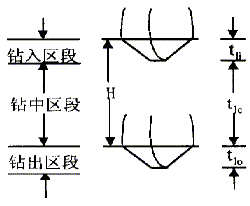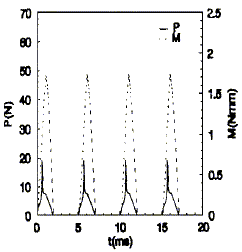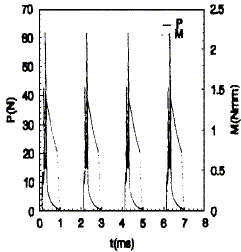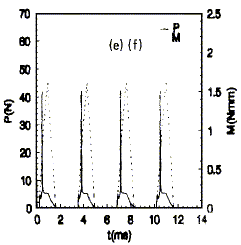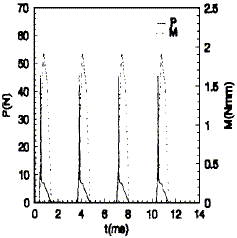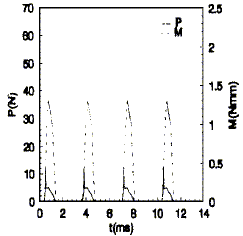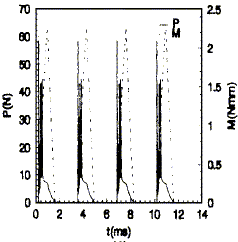1 Introduction
|
2 Establishment of forecasting model
- Drilling section
- In the mid-drilling section of the drilling process, the dynamic axial forces and torques should be considered taking into account the effects of the main cutting edge and the chisel edge, and the dynamic axial forces generated by the main cutting edge and the chisel edge in the mid-drill section. The torque is superimposed separately, that is, the dynamic axial force P and the torque M generated by the middle section of the drill, that is,
Where, P l , P c ( M l , M c ) are the axial forces (torques) produced by the main cutting edge and the chisel edge, respectively, D P lj , D P ck ( D M lj , D M ck ) are The elemental axial force (torque) produced by the main cutting edge and the chisel edge, and the number of elements are N l and N c , respectively, F′ c , F′ T are the cutting force components in the normal plane of the bevel cutting, F f is The frictional component perpendicular to the normal plane, l sd , K rd , h d ( h ′ d ) are the dynamic blade inclination angle, the main declination angle and the feed angle, respectively, r j and r k are the main cutting edge and the chisel edge of the unit respectively. The radius at the midpoint.
(1) 
(2) - Drilling section
- The analysis of the dynamic axial force and torque of the drilling section during the drilling process is similar to that of the drill section, and the dynamic axial force and torque generated by the main cutting edge and the chisel edge in the drilling section are respectively superimposed, ie The dynamic axial force P i and the torque M i generated for drilling the section, ie

(3) 
(4) - The analysis of the dynamic axial force and torque of the drilling section during the drilling process is similar to that of the drill section, and the dynamic axial force and torque generated by the main cutting edge and the chisel edge in the drilling section are respectively superimposed, ie The dynamic axial force P i and the torque M i generated for drilling the section, ie
- Drilling section
- Since the chiseling section of the drilling section does not participate in the cutting, the dynamic axial force and torque of the drilling section are the dynamic axial forces P o and the torque M o produced by the main cutting edge in the drilling section. ,which is

(5) 
(6) - Since the chiseling section of the drilling section does not participate in the cutting, the dynamic axial force and torque of the drilling section are the dynamic axial forces P o and the torque M o produced by the main cutting edge in the drilling section. ,which is
| |
| |
| |
| Fig. 2 Computer simulation of dynamic axial force and torque in the section of vibratory drilling | |
3 Computer simulation of three-section dynamic axial force and torque
4 Conclusion
Impact Testing Machine,Izod Impact Testing Machine,Charpy Impact Testing Machine,Izod Impact Test Machine
Jinan Chenda Testing Machine Manufacturing Co., Ltd. , https://www.jncdtester.com
